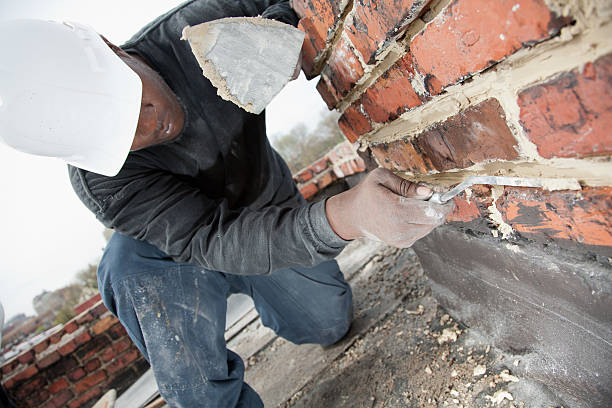Opening the Tricks of Sustainable Stonework Building And Construction Practices for Eco-Friendly Buildings
Among the myriad approaches to environmentally friendly structure, sustainable stonework construction stands out as a time-tested and resilient method that holds a wide range of untapped possibility. From the choice of materials to innovative construction techniques, the keys to achieving sustainability within stonework building are diverse and interesting.
Advantages of Sustainable Stonework Construction
Accepting lasting stonework building techniques not just reduces ecological effect but also offers long-term financial benefits to building contractors and communities. By using materials like recycled blocks, blocks, and stones, home builders can significantly decrease the carbon footprint of their jobs while advertising source effectiveness. In addition, lasting stonework building and construction techniques, such as proper insulation and thermal mass buildings, can boost power efficiency within buildings, leading to decreased operational expenses gradually.
Additionally, the durability and durability of stonework frameworks add to long-term economic benefits. Buildings created making use of sustainable stonework practices frequently need less maintenance and repair work, translating to set you back savings for contractors and residential or commercial property owners. The durability of stonework materials also ensures that frameworks continue to be secure and safe, decreasing the need for constant improvements or substitutes.
Eco-Friendly Masonry Materials
Making use of environment-friendly stonework materials is a crucial action towards improving the sustainability of building and construction methods and minimizing ecological impact while making the most of long-term financial advantages. Sustainable masonry materials are sourced, generated, and made use of in a manner that decreases general ecological influence. Lasting concrete obstructs include recycled aggregates and may feature improved insulation residential properties, adding to power performance in buildings.
Furthermore, natural materials like adobe, rammed earth, and straw bales offer outstanding thermal mass residential properties, lowering the demand for home heating and cooling down energy. These materials are typically locally offered, promoting regional economies and reducing transportation-related carbon emissions. By picking eco-friendly stonework products, building jobs can considerably decrease their environmental impact and add to the development of healthier, more lasting built settings.
Energy-Efficient Stonework Methods
Power performance plays a critical role in boosting the sustainability of stonework building practices. One essential energy-efficient masonry technique is the usage of thermal mass, which includes incorporating thick products like concrete or brick right into the building's framework to take in and save warm.

Innovations in Lasting Stonework
Recent innovations in lasting masonry methods have actually produced cutting-edge methods that are reshaping the building sector. One such technology is the advancement of self-healing concrete, which makes use of bacteria embedded within the concrete to heal cracks autonomously. This advancement not only lowers upkeep expenses but also boosts the durability of stonework frameworks, adding to their sustainability.
Another notable development is making use of recycled aggregates in masonry building and construction - masonry contractor. By integrating materials such as crushed ceramic waste or recycled glass into concrete blends, builders can lower the environmental effect of construction tasks while preserving structural stability. This practice not just diverts waste from land fills yet likewise preserves natural sources, making it a crucial development in lasting masonry building and construction
Moreover, the integration of electronic style tools, such as Building Info Modeling (BIM), is changing the means stonework frameworks are prepared and built. BIM enables more precise calculations, minimized material wastage, and enhanced power efficiency, inevitably leading to even more lasting building techniques. These developments jointly symbolize an encouraging future for sustainable masonry construction in the period of environment-friendly buildings.
Future Trends in Masonry Sustainability
With the ingenious strides made in lasting stonework techniques, the future patterns in stonework sustainability are poised to additional revolutionize the building market. Among the vital fads shaping the future of stonework sustainability is the raised combination of technology. Improvements such as Structure Details Modeling (BIM) and digital fact simulations are being utilized to optimize masonry building processes, bring about useful content minimized product waste and improved energy efficiency in buildings.
Moreover, the advancement of unique sustainable materials is readied to play a substantial duty in boosting the eco-friendliness of stonework building and construction. masonry contractor. Technologies like self-healing concrete, recycled accumulations, and bio-based binders are gaining traction for their capacity to decrease ecological influence while keeping architectural honesty

Conclusion
In verdict, sustainable masonry building techniques provide countless benefits for green buildings. By utilizing environment-friendly materials and energy-efficient methods, masonry hop over to here can add to a more lasting built atmosphere. Technologies in sustainable stonework are continuously being established to better enhance the environmental performance of structures. Looking towards the future, the fad of stonework sustainability is anticipated to expand, leading to more eco-friendly and energy-efficient construction practices in the years ahead.